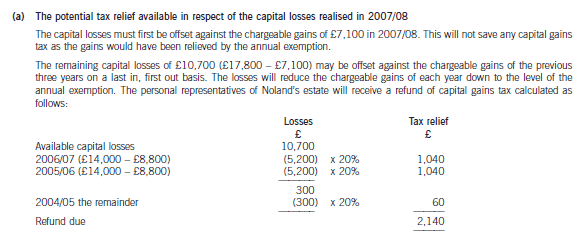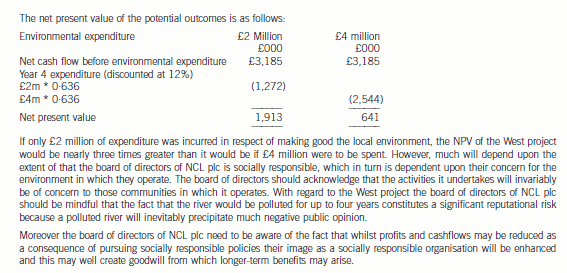陕西2022ACCA考试报名时间及注意事项
发布时间:2022-02-22
各位陕西地区的小伙伴们,你们了解2022年ACCA考试的报名时间吗?接下来就和51题库考试学习网一起去了解下ACCA考试报名截止时间的相关分享。
2022年6月ACCA所有报名时间如下:
常规报名截止时间:2022年02月08日--2022年05月02日
后期报名截止时间:2022年05月09日
ACCA考试报名条件如下所示:
1)凡具有教育部承认的大专以上学历,即可报名成为ACCA的正式学员;
2)教育部认可的高等院校在校生,顺利完成大一的课程考试,即可报名成为ACCA的正式学员;
3)未符合1、2项报名资格的16周岁以上的申请者,也可以先申请参加FIA(Foundations in Accountancy)基础财务资格考试。在完成基础商业会计(FAB)、基础管理会计(FMA)、基础财务会计(FFA)3门课程,并完成ACCA基础职业模块,可获得ACCA商业会计师资格证书(Diploma in Accounting and Business),资格证书后可豁免ACCAF1-F3三门课程的考试,直接进入技能课程的考试。
注册报名ACCA所需材料如下所示:
(一)在校学生所需准备的ACCA注册材料
1. 中英文在校证明(原件)
2. 中英文成绩单(可复印加盖所在学校或学校教务部门公章)
3. 中英文个人身份证件或护照(复印件加盖所在学校或学校教务部门公章)
4. 2寸彩色护照用证件照一张
5. 用于支付注册费用的国际双币信用卡或国际汇票(推荐使用Visa)
(二)非在校学生所需准备的注册资料(符合学历要求)
1. 中英文个人身份证件或护照(复印件加盖第三方章)
2. 中英文学历证明(复印件加盖第三方章)
3. 2寸彩色护照用证件照一张
4. 用于支付注册费用的国际双币信用卡或国际汇票(推荐使用Visa)
(三)非在校学生所需准备的注册资料(不符合学历要求-FIA形式)
1. 中英文个人身份证件或护照(复印件加盖第三方章)
2. 2寸彩色护照用证件照一张
3. 用于支付注册费用的国际双币信用卡或国际汇票(推荐使用Visa)
以上就是51题库考试学习网为陕西地区考生分享的ACCA考试报名的相关信息,希望能够帮到大家!后续请大家继续关注51题库考试学习网,我们将分享更多的考试资讯给广大考生!
下面小编为大家准备了 ACCA考试 的相关考题,供大家学习参考。
5 Crusoe has contacted you following the death of his father, Noland. Crusoe has inherited the whole of his father’s
estate and is seeking advice on his father’s capital gains tax position and the payment of inheritance tax following his
death.
The following information has been extracted from client files and from telephone conversations with Crusoe.
Noland – personal information:
– Divorcee whose only other relatives are his sister, Avril, and two grandchildren.
– Died suddenly on 1 October 2007 without having made a will.
– Under the laws of intestacy, the whole of his estate passes to Crusoe.
Noland – income tax and capital gains tax:
– Has been a basic rate taxpayer since the tax year 2000/01.
– Sales of quoted shares resulted in:
– Chargeable gains of £7,100 and allowable losses of £17,800 in the tax year 2007/08.
– Chargeable gains of approximately £14,000 each tax year from 2000/01 to 2006/07.
– None of the shares were held for long enough to qualify for taper relief.
Noland – gifts made during lifetime:
– On 1 December 1999 Noland gave his house to Crusoe.
– Crusoe has allowed Noland to continue living in the house and has charged him rent of £120 per month
since 1 December 1999. The market rent for the house would be £740 per month.
– The house was worth £240,000 at the time of the gift and £310,000 on 1 October 2007.
– On 1 November 2004 Noland transferred quoted shares worth £232,000 to a discretionary trust for the benefit
of his grandchildren.
Noland – probate values of assets held at death: £
– Portfolio of quoted shares 370,000
Shares in Kurb Ltd 38,400
Chattels and cash 22,300
Domestic liabilities including income tax payable (1,900)
– It should be assumed that these values will not change for the foreseeable future.
Kurb Ltd:
– Unquoted trading company
– Noland purchased the shares on 1 December 2005.
Crusoe:
– Long-standing personal tax client of your firm.
– Married with two young children.
– Successful investment banker with very high net worth.
– Intends to gift the portfolio of quoted shares inherited from Noland to his aunt, Avril, who has very little personal
wealth.
Required:
(a) Prepare explanatory notes together with relevant supporting calculations in order to quantify the tax relief
potentially available in respect of Noland’s capital losses realised in 2007/08. (4 marks)

The IOA Division is also considering whether to undertake an investment in the West of the country (the West Project).
An initial cash outlay investment of £12 million will be required and a net cash inflow amounting to £5 million is
expected to arise in each of the four years of the life of the project.
The activities involved in the West project will cause the local river to become polluted and discoloured due to the
discharge of waste substances from mining operations.
It is estimated that at the end of year four a cash outlay of £2 million would be required to restore the river to its
original colour. This would also clear 90% of the pollution caused as a result of the mining activities of the IOA
Division.
The remaining 10% of the pollution caused as a result of the mining activities of the IOA Division could be cleared
up by a further cash outlay of £2 million.
(c) Evaluate the West project and, stating your reasons, comment on whether the board of directors of NCL plc
should spend the further £2 million in order to eliminate the remaining 10% of pollution. (6 marks)
(Ignore Taxation).
(c) The net present value of the West project is dependent upon the level of environmental expenditure that will be incurred by
Division IOA at the conclusion of the project. The potential NPV of the West project can be calculated using a discount rate
of 12% per annum which assumes that the West project has similar characteristics to the North, East and South projects.
Net cash inflows for each of years 1–4 = £5 million
Cumulative discount factor at 12% per annum = 3·037
Therefore the present value of cashflows is £5 million x 3·037 = £15,185 million and the net cash flow after the initial
outlay of £12 million is £3,185,000.
There is now the strategic consideration regarding whether to spend £2 million which will restore the river to its original colour
and also clear 90% of the pollution caused as a result of the mining activities of the IOA Division, or to incur expenditure of
a further £2 million which will completely redress any damage done to the environment by the activities of the IOA Division.

3 (a) Financial statements often contain material balances recognised at fair value. For auditors, this leads to additional
audit risk.
Required:
Discuss this statement. (7 marks)
3 Poppy Co
(a) Balances held at fair value are frequently recognised as material items in the statement of financial position. Sometimes it is
required by the financial reporting framework that the measurement of an asset or liability is at fair value, e.g. certain
categories of financial instruments, whereas it is sometimes the entity’s choice to measure an item using a fair value model
rather than a cost model, e.g. properties. It is certainly the case that many of these balances will be material, meaning that
the auditor must obtain sufficient appropriate evidence that the fair value measurement is in accordance with the
requirements of financial reporting standards. ISA 540 (Revised and Redrafted) Auditing Accounting Estimates Including Fair
Value Accounting Estimates and Related Disclosures and ISA 545 Auditing Fair Value Measurements and Disclosures
contain guidance in this area.
As part of the understanding of the entity and its environment, the auditor should gain an insight into balances that are stated
at fair value, and then assess the impact of this on the audit strategy. This will include an evaluation of the risk associated
with the balance(s) recognised at fair value.
Audit risk comprises three elements; each is discussed below in the context of whether material balances shown at fair value
will lead to increased risk for the auditor.
Inherent risk
Many measurements based on estimates, including fair value measurements, are inherently imprecise and subjective in
nature. The fair value assessment is likely to involve significant judgments, e.g. regarding market conditions, the timing of
cash flows, or the future intentions of the entity. In addition, there may be a deliberate attempt by management to manipulate
the fair value to achieve a desired aim within the financial statements, in other words to attempt some kind of window
dressing.
Many fair value estimation models are complicated, e.g. discounted cash flow techniques, or the actuarial calculations used
to determine the value of a pension fund. Any complicated calculations are relatively high risk, as difficult valuation techniques
are simply more likely to contain errors than simple valuation techniques. However, there will be some items shown at fair
value which have a low inherent risk, because the measurement of fair value may be relatively straightforward, e.g. assets
that are regularly bought and sold on open markets that provide readily available and reliable information on the market prices
at which actual exchanges occur.
In addition to the complexities discussed above, some fair value measurement techniques will contain significant
assumptions, e.g. the most appropriate discount factor to use, or judgments over the future use of an asset. Management
may not always have sufficient experience and knowledge in making these judgments.
Thus the auditor should approach some balances recognised at fair value as having a relatively high inherent risk, as their
subjective and complex nature means that the balance is prone to contain an error. However, the auditor should not just
assume that all fair value items contain high inherent risk – each balance recognised at fair value should be assessed for its
individual level of risk.
Control risk
The risk that the entity’s internal monitoring system fails to prevent and detect valuation errors needs to be assessed as part
of overall audit risk assessment. One problem is that the fair value assessment is likely to be performed once a year, outside
the normal accounting and management systems, especially where the valuation is performed by an external specialist.
Therefore, as a non-routine event, the assessment of fair value is likely not to have the same level of monitoring or controls
as a day-to-day business transaction.
However, due to the material impact of fair values on the statement of financial position, and in some circumstances on profit,
management may have made great effort to ensure that the assessment is highly monitored and controlled. It therefore could
be the case that there is extremely low control risk associated with the recognition of fair values.
Detection risk
The auditor should minimise detection risk via thorough planning and execution of audit procedures. The audit team may
lack experience in dealing with the fair value in question, and so would be unlikely to detect errors in the valuation techniques
used. Over-reliance on an external specialist could also lead to errors not being found.
Conclusion
It is true that the increasing recognition of items measured at fair value will in many cases cause the auditor to assess the
audit risk associated with the balance as high. However, it should not be assumed that every fair value item will be likely to
contain a material misstatement. The auditor must be careful to identify and respond to the level of risk for fair value items
on an individual basis to ensure that sufficient and appropriate evidence is gathered, thus reducing the audit risk to an
acceptable level.
声明:本文内容由互联网用户自发贡献自行上传,本网站不拥有所有权,未作人工编辑处理,也不承担相关法律责任。如果您发现有涉嫌版权的内容,欢迎发送邮件至:contact@51tk.com 进行举报,并提供相关证据,工作人员会在5个工作日内联系你,一经查实,本站将立刻删除涉嫌侵权内容。
- 2020-01-08
- 2020-01-03
- 2021-01-13
- 2020-01-09
- 2021-05-23
- 2020-04-18
- 2021-04-25
- 2021-01-13
- 2020-01-09
- 2021-01-29
- 2021-01-16
- 2020-09-03
- 2020-01-09
- 2020-07-04
- 2020-01-10
- 2020-01-10
- 2020-02-01
- 2021-05-26
- 2020-01-09
- 2020-04-17
- 2020-02-11
- 2021-01-21
- 2020-01-10
- 2021-04-08
- 2020-01-10
- 2020-01-10
- 2021-04-17
- 2020-03-26
- 2021-05-27
- 2020-02-27